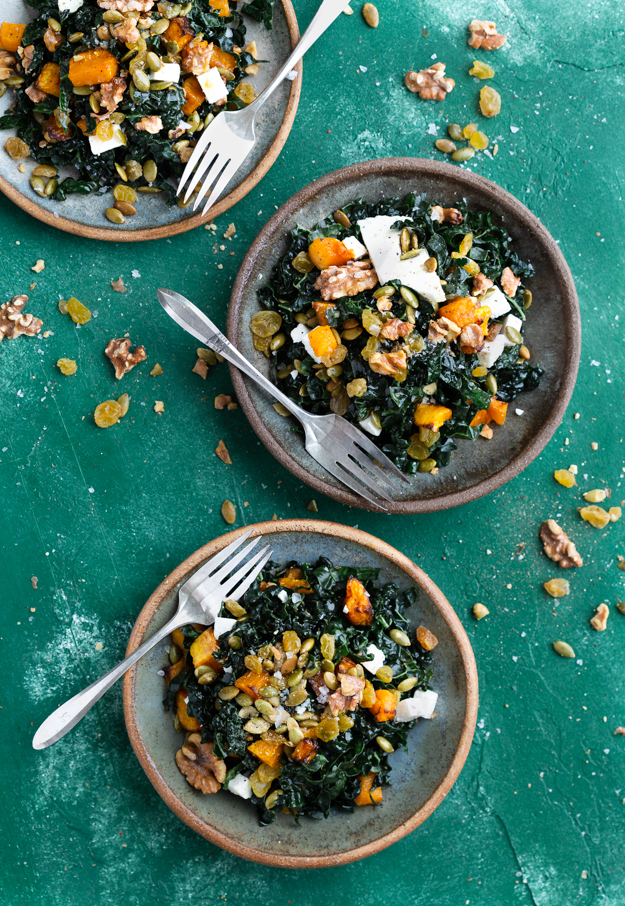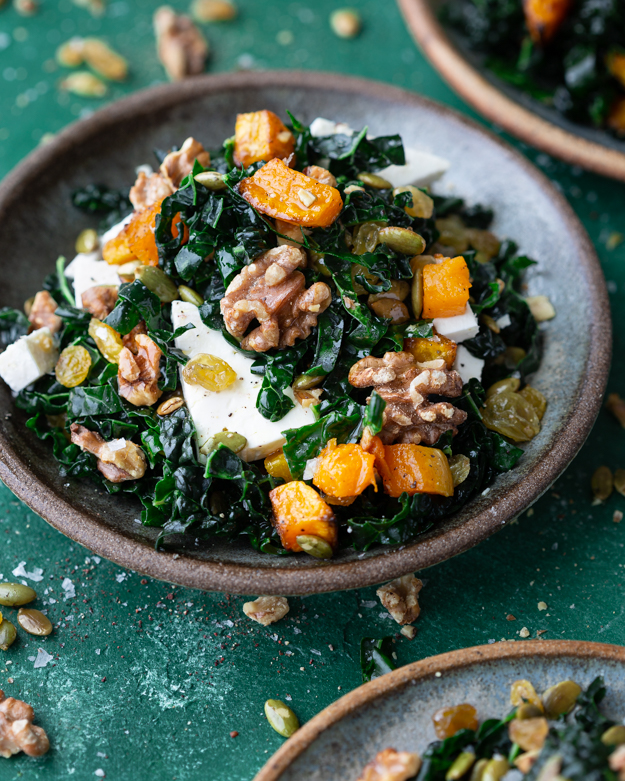
Oscar Wilde once said, “I am not young enough to know everything.” As I age, I have learned to not rule out any possibilities. Kale is a perfect case in point. If you are a regular reader of this blog, you will know that I used to be a kale hater. Turns out, I was wrong. I just didn’t understand kale. Much like some people, kale is tough and needs a bit of massaging to coax out her very best qualities.
I recently had a kale salad at Mudtown Flats, in Owen Sound that blew me away and changed my mind about kale salads. I came home and immediately set about trying to recreate it. I think I nailed it. I urge you to give it a try.
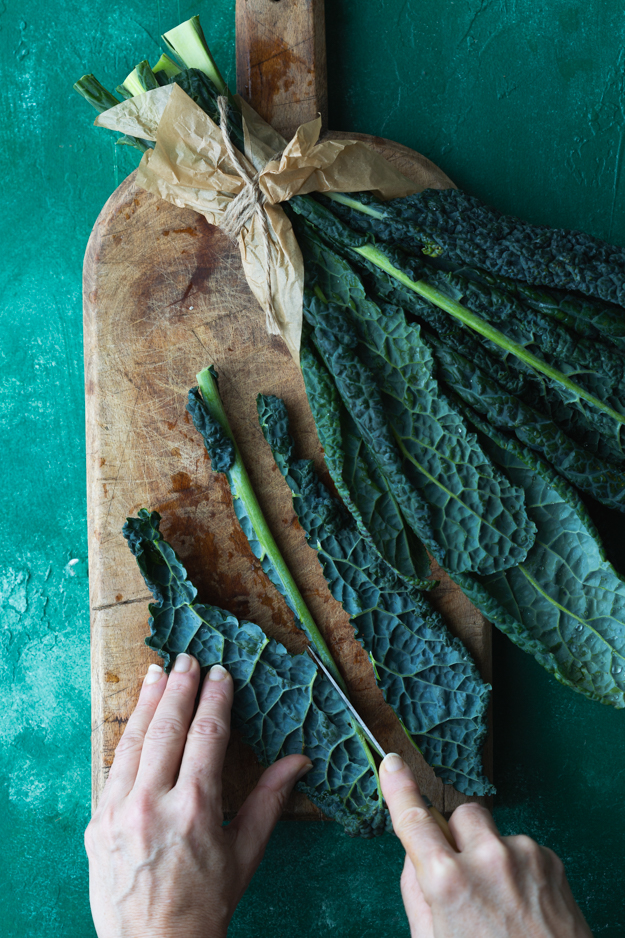
Seek out Tuscan Kale (also known as Lacinato Kale or Dinosaur Kale or Cavalo Nero/Black Kale). It is a bit more tender than the curly variety and the flavour, while still quite earthy, has an almost nutty sweetness. The first step is to remove the tough stems.
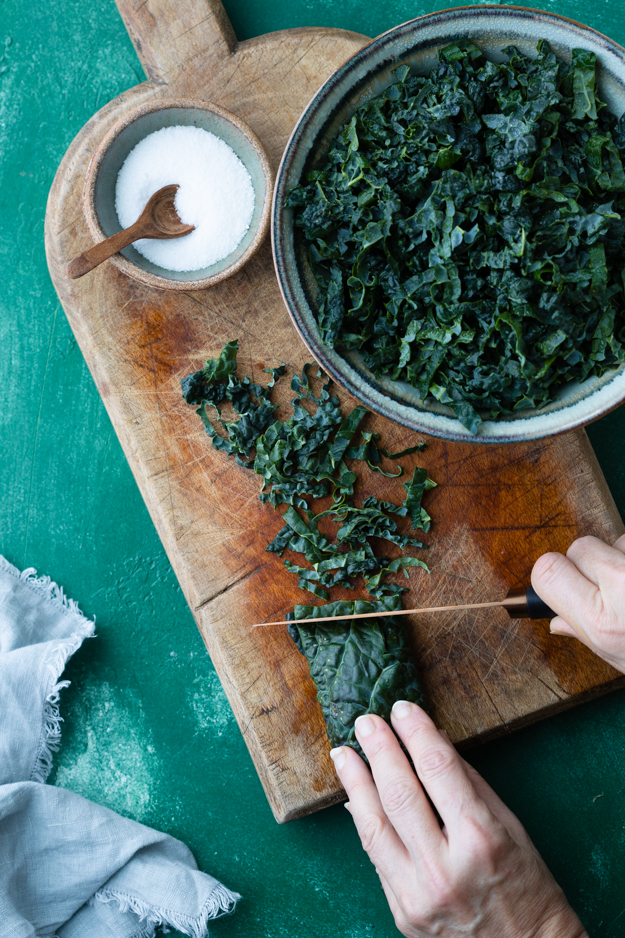
Next, I’m going to give you the opportunity to practice your knife skills and ask you to slice the leaves as thin as you can. Remember to tuck your fingers under and away from the knife.
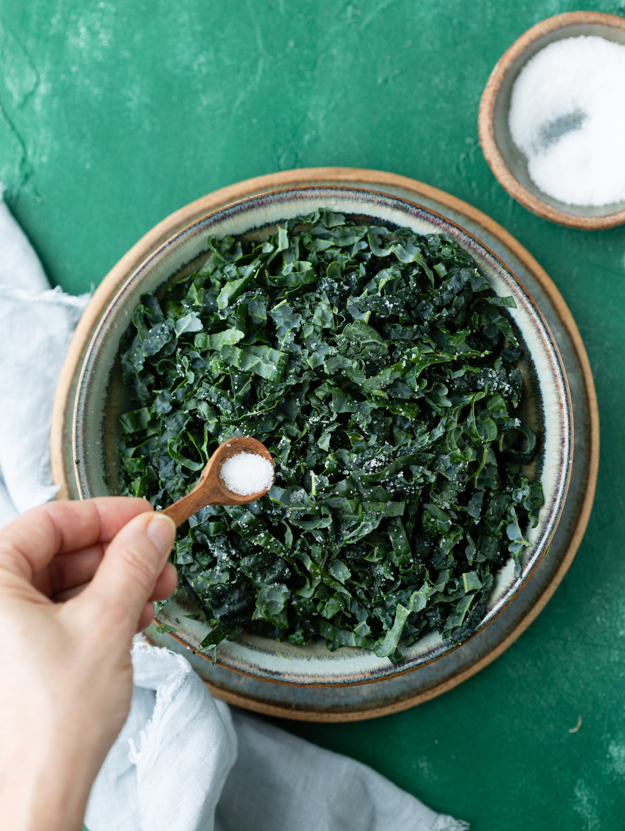
Next, treat the kale to a good sprinkling of kosher salt and get your hands in there to gently massage the leaves. I learned this trick from Mark Bittman. Did you guys know he recently started an online food magazine called Heated? It’s illuminating, highly entertaining and very well written.
The salt, combined with the massaging action, helps to break down the cell walls of the kale and make it more tender. Rub the kale leaves together between your fingers, only until it starts to wilt. It will only take a minute or two. Let it sit while you get on with the rest of the salad.
As in choosing a life mate, what you choose to pair with the kale is an important decision. Squash is an excellent partner. The sweetness of squash is the perfect foil for kale’s slighly bitter edge.
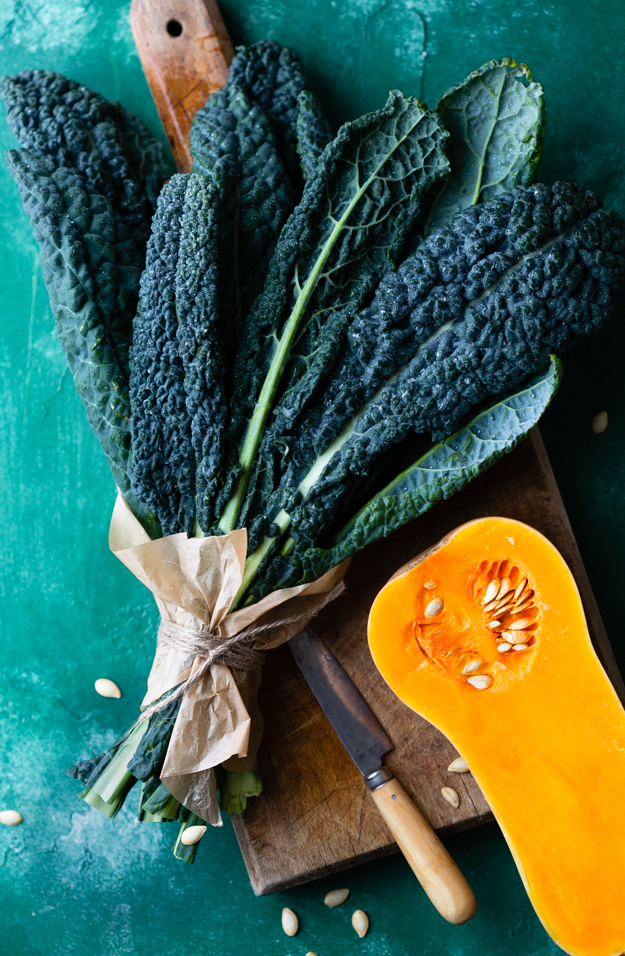
Cut the squash into little cubes, give it a drizzle of olive oil, salt and pepper and roast in a hot oven until the edges get all brown and crispy.
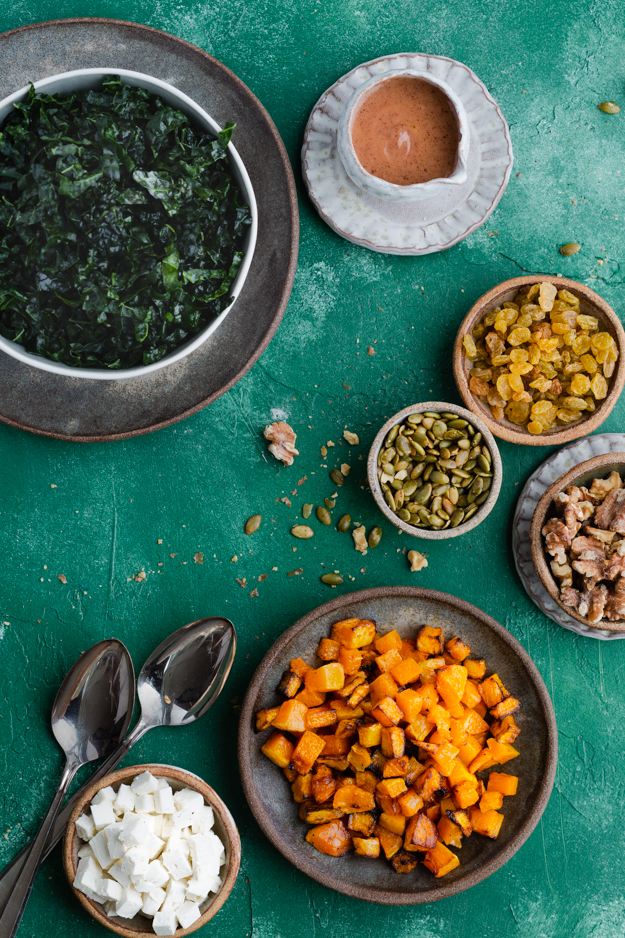
With every salad I compose, I aim for contrast in both flavour and texture. Kale and walnuts are slightly bitter. Squash and golden raisins will balance the bitterness perfectly.
Crunch comes from toasted pumpkin seeds and walnuts. Walnuts are another ingredient I used to hate. Again, I didn’t really understand how and when to use them. They must be very well toasted or they will taste very mealy and unpleasant.
I added some feta cheese for creaminess and salt. If you can find Bulgarian feta, give it a try. It has a creamier texture than Greek feta. Check out this post if you’re a cheese geek and keen to learn about the differences between all the different styles of feta.
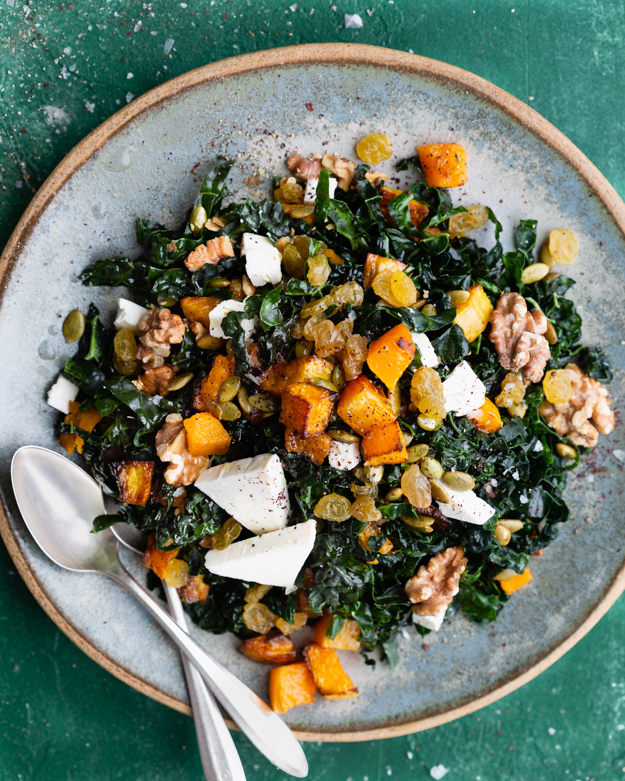
Sumac, a dried middle-eastern spice, adds a liveliness and lemony kick to this vinaigrette. It’s becoming more widely available and you’ll find yourself using it in dry rubs or marinades for chicken lamb, fish and vegetables as well as a finishing spice for humus and other dips and spreads. This astringent and tangy spice is very versatile.
